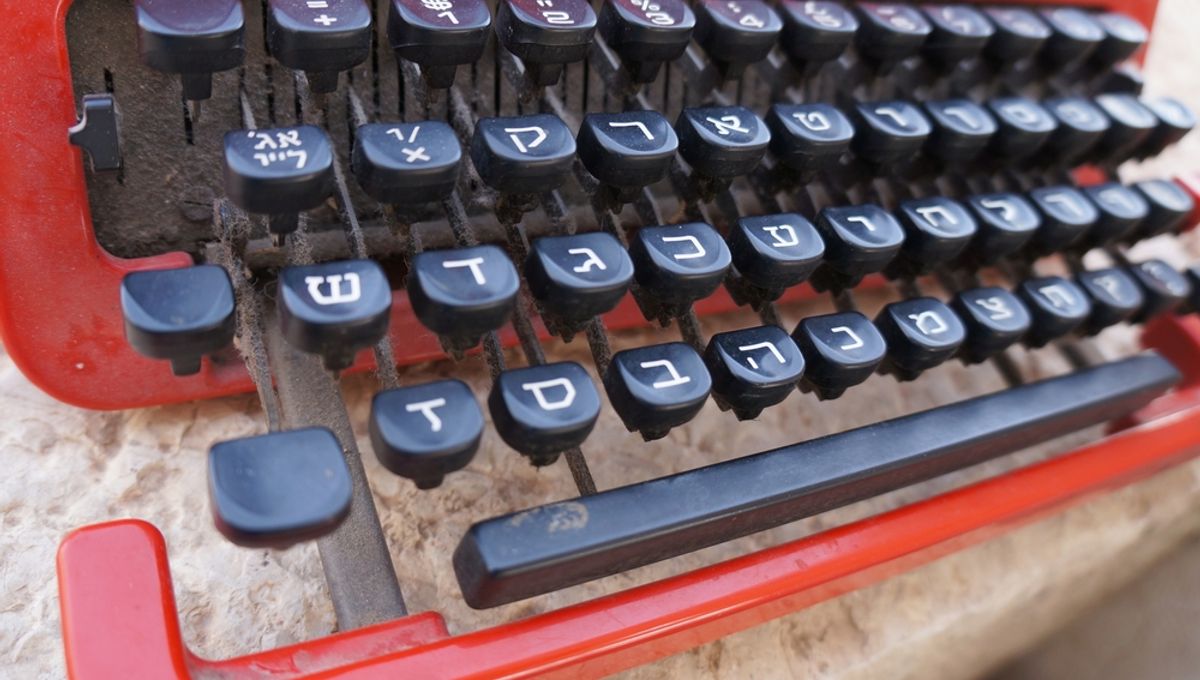
Spoken words don’t leave a physical footstep on the world, so taking the origins of human language can be a tricky business. Language is also in a constant state of flux, with words and their meaning transforming and changing with every generation. As such, it would be missing the point to single out one language as the oldest in the world.
That said, there are a number of languages from ancient times which are still spoken day – and they all illuminate a fascinating part of the human story.
Hebrew
Hebrew is the sacred language of Jewish scripture that’s over 3,000 years old, with early forms of the language appearing in text around 1,200 BCE. It was first used only by religious scholars, but it eventually became the everyday language of ancient Israelites.
By around 400 CE, Hebrew ceased to be a regular spoken language and it very nearly became a dead language. However, the rise of Zionism in the modern era ensured a resurgence of the language and it’s now spoken by nine million people, most notably in Israel where it’s the official language.
Modern Hebrew is different from the Biblical version, as you might expect after thousands of years, but it’s possible to find direct threads between the two.
Sanskrit
Sanskrit is another language that sprung out of religion in ancient times, serving as the vernacular of the Vedas, the scriptures of Hinduism, as well historical texts of Buddhism and Jainism. The Hindu texts were written around 1,200 BCE, meaning there’s a recorded history of the language that dates back over 3,000 years.
It’s still spoken today in some form, although primarily by Hindu priests during religious ceremonies. It’s estimated that less than 1 percent of Indians can speak the language, with just 14,000 people describing it as their primary language.
Its legacy lives on, however. Sanskrit belongs to a broad family known as the Indo-European languages, meaning it has clear connections to English, French, Portuguese, Spanish, Russian, and many other languages widely spoken in Europe.
Tamil
Around 80 million still people speak Tamil as a day-to-day language, which is pretty impressive considering that the earliest Tamil literature – Tolkāppiyam – has been dated to 300 BCE. It’s primarily spoken in Sri Lanka and the southernmost state of India.
Greek
In one form or another, Greek has been in use from at least 1300 BCE. Its Classical form is notably different from the language spoken today in Greece, although most fluent speakers should be able to grasp the language of Hellenistic or “Koine” Greek spoken in the past.
However, forms like the Attic dialect, one of the oldest forms spoken by the likes of Socrates, will likely be too distant for modern-day speakers to have a solid understanding.
Arabic
Arabic has played an extremely prominent part in world history. Early forms of Arabic date back as far as the eighth century BCE, but the language underwent significant change over the centuries, most notably between the third and sixth centuries CE.
It first emerged in the northwest of the Arabian Peninsula and is a member of the Semitic family of languages, which also includes Hebrew and Aramaic. As the primary language of Islamic religious texts, an estimated 371 million people worldwide speak Arabic as their mother tongue today. Many more speak it as a second language, owing to its importance to Islam.
Chinese
There is no single Chinese language, although the majority of people in China speak a modern standardized form of Mandarin Chinese. There’s also a collection of regional dialects that are still widely spoken, such as Yue (Cantonese), Xiang (Hunanese), Min dialect, Gan dialect, Wu dialect, and Kejia.
However, they can all be traced back to archaic Chinese. Some of the earliest known use of Chinese character inscriptions have been found in turtle shells that date from at least 1123 BCE, suggesting the written language has existed for more than 3,000 years. It has since diversified and evolved significantly, but the influence of this ancient language system can still be picked up in modern-day speakers.
Latin
Latin is another language that’s of huge historical significance. Proto-Italic evolved Old Latin around 750 to 100 BCE, eventually becoming Classical Latin used in the late Roman Republic and early Roman Empire between 100 BCE to 450 CE.
By the sixth to ninth centuries CE, the language had evolved into the modern Romance languages, such as Italian, Spanish, Portuguese, and French.
Although Latin is no longer spoken as a first language, it has managed to avoid becoming a dead language thanks to keen interest in ancient texts and Latin’s far-reaching influence on European culture, including Linnaeus’s choice of Latin for binomial nomenclature, the system of naming organisms in science.
Euskera
Euskera is widely considered to be the oldest living language in Western Europe. Around 700,000 people still speak it in Basque Country, an autonomous community located in the Pyrenees mountains between the borders of France and Spain.
Its precise age is a mystery as it’s unrelated to any other existing languages. This does, however, make it a fascinating language for linguists to study as it is one of the few surviving languages of Europe before it became flooded with Indo-European languages.
Source Link: What's The Oldest Language Still Spoken Today?